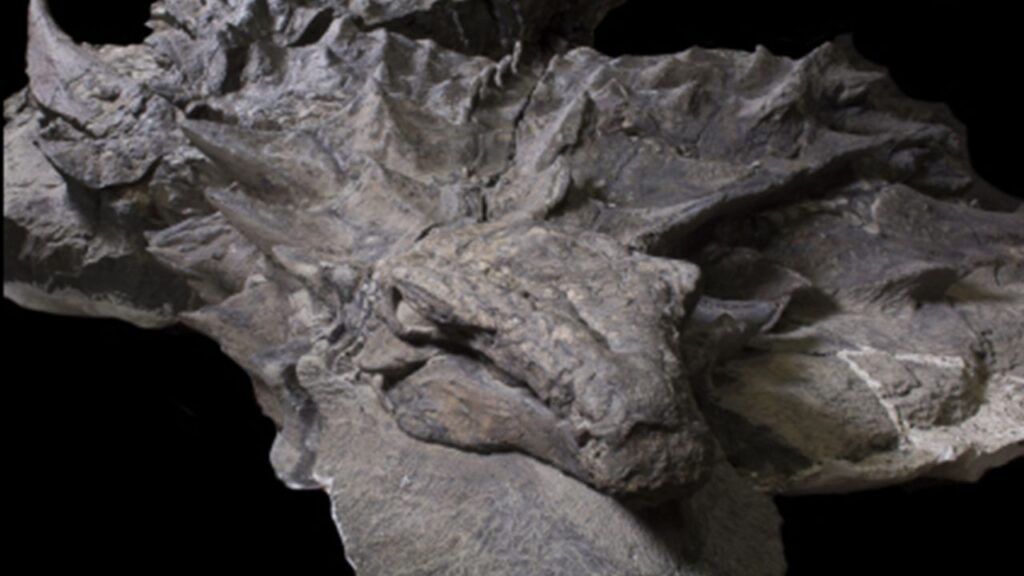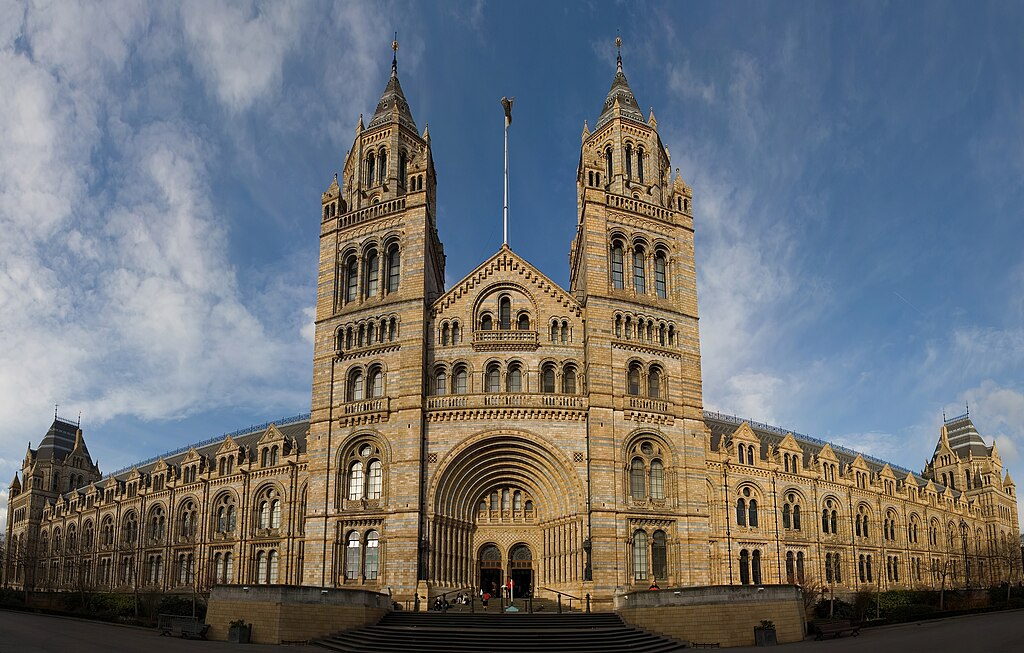The Museum of the Rockies in Bozeman, Montana stands as a gateway to a world long vanished, where colossal dinosaurs roamed across landscapes that would eventually become the mountainous terrain we know today. This world-renowned institution offers visitors an extraordinary journey through billions of years of Earth’s history, with a particular focus on Montana’s rich paleontological heritage. From towering Tyrannosaurus rex skeletons to microscopic fossilized pollen, the museum presents a comprehensive narrative of prehistoric Montana that continues to evolve with new discoveries and scientific research. As one of the premier research and curation facilities associated with dinosaur fossils in the world, the Museum of the Rockies provides not just a window into our planet’s distant past, but also showcases the ongoing scientific quest to understand the complex tapestry of life that preceded human existence.
The Legacy of Jack Horner
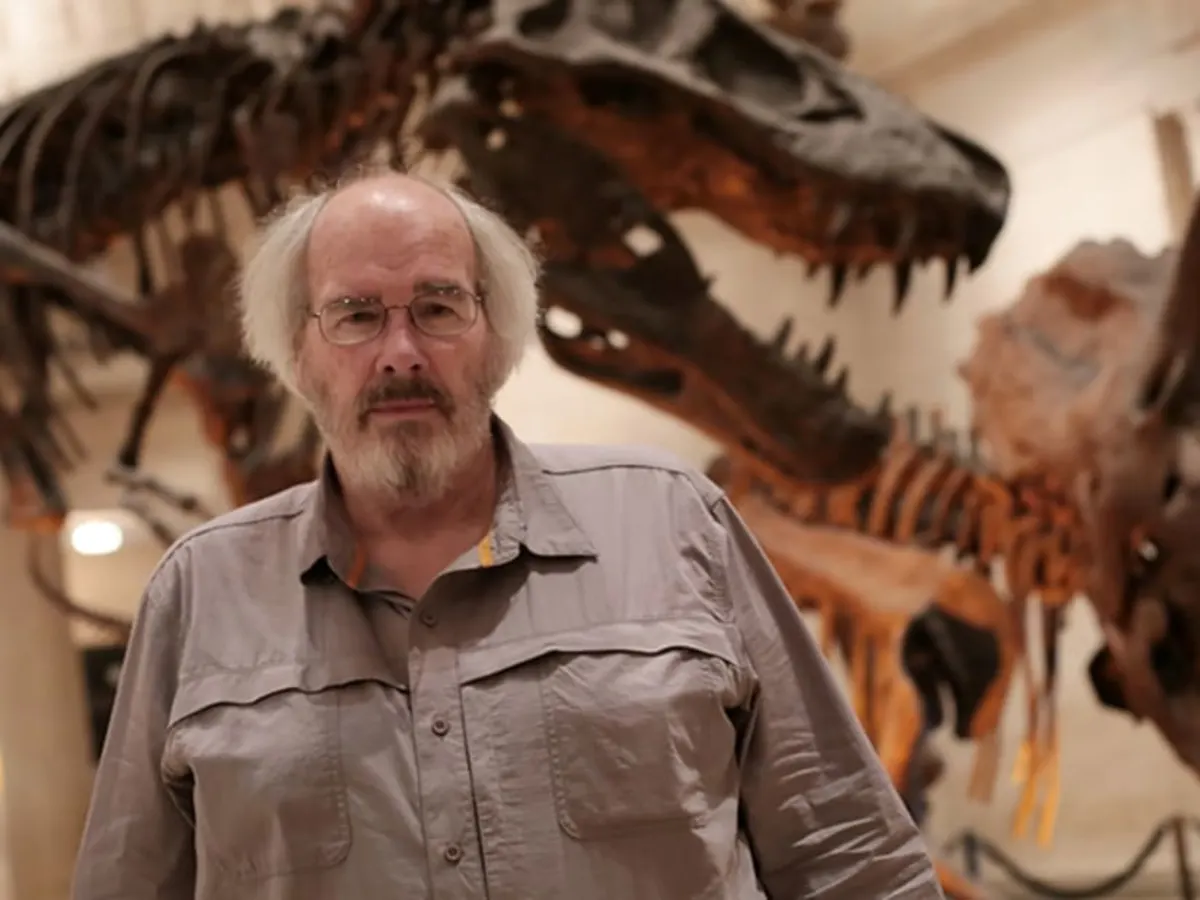
The Museum of the Rockies owes much of its paleontological prominence to Jack Horner, who served as the museum’s curator of paleontology for decades. Horner, who rose to fame as the technical advisor for the Jurassic Park films, revolutionized our understanding of dinosaur biology and behavior through his groundbreaking work in Montana’s fossil beds. His discoveries of nesting grounds and baby dinosaurs at the Egg Mountain site provided the first evidence of parental care among dinosaurs, fundamentally changing how we view these ancient creatures. Horner’s approach to paleontology emphasized looking beyond individual specimens to understand dinosaurs as living, breathing animals within complex ecosystems. His legacy continues at the museum through ongoing research programs and the impressive dinosaur hall that showcases many of his most significant discoveries, inspiring new generations of paleontologists to explore Montana’s fossil-rich landscapes.
Tyrannosaurus rex: Montana’s Prehistoric Apex Predator
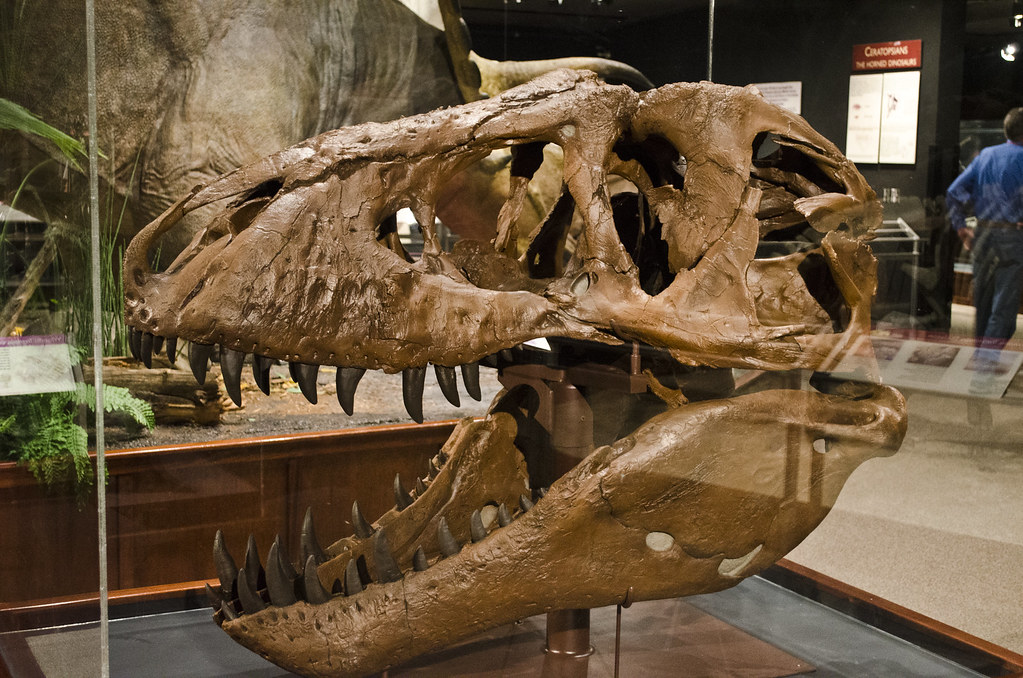
The Museum of the Rockies boasts one of the world’s most impressive collections of Tyrannosaurus rex specimens, including the famous “B-rex” that contained preserved soft tissue—a discovery that shocked the scientific community. Montana has yielded more T. rex fossils than any other region globally, earning it the nickname “T. rex country” among paleontologists. These massive predators dominated Montana’s landscape during the Late Cretaceous period, approximately 68-66 million years ago, just before the mass extinction event that wiped out non-avian dinosaurs. The museum’s displays include both cast replicas and authentic fossils that showcase the incredible size and power of these apex predators. Visitors can observe the massive skull structures with bone-crushing teeth, robust leg bones that supported their six-ton frames, and even evidence of injuries and healing that provide insights into T. rex’s violent lifestyle and surprising resilience.
The Maiasaura Discovery: Rewriting Dinosaur Parenting
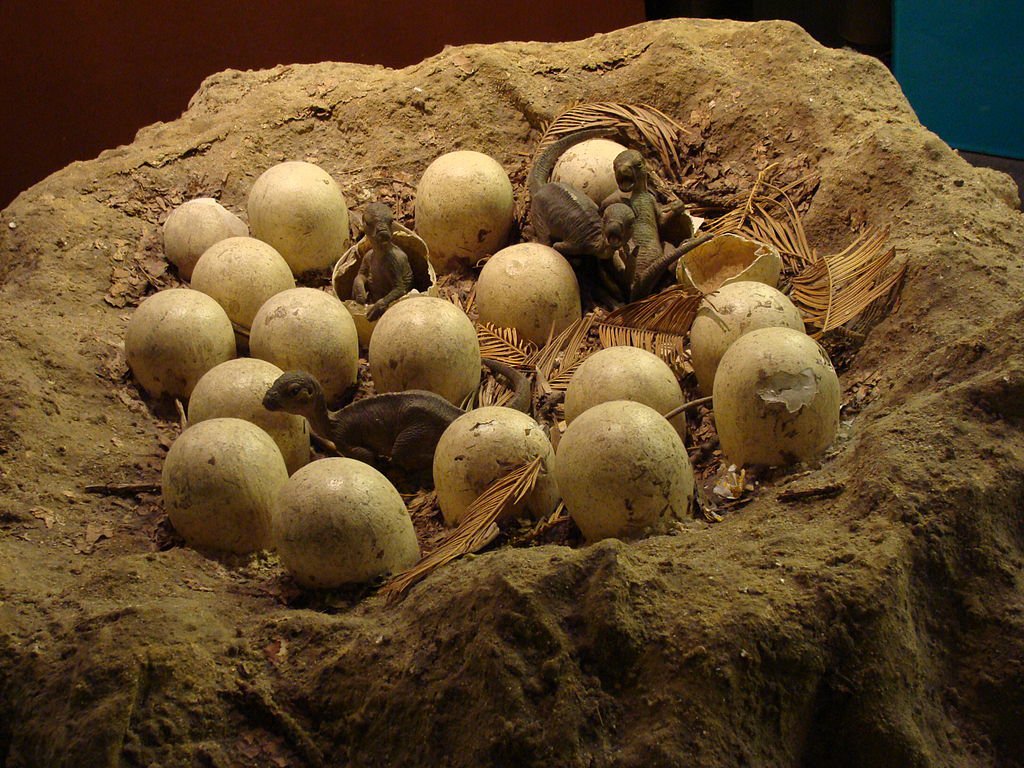
One of the most revolutionary dinosaur discoveries featured at the Museum of the Rockies is Maiasaura peeblesorum, whose name means “good mother lizard.” This discovery fundamentally transformed our understanding of dinosaur behavior and biology. In the 1970s, Jack Horner and his team uncovered vast nesting grounds in western Montana containing eggs, hatchlings, juveniles, and adult Maiasaura fossils—the first conclusive evidence that some dinosaurs cared for their young. Analysis of the nesting sites revealed that these duck-billed dinosaurs returned to the same nesting areas year after year, similar to modern birds. The discovery of worn teeth in the nestlings suggested that parents brought food to their immobile young, upending the previous notion that all dinosaurs abandoned their eggs. The Maiasaura exhibit allows visitors to witness actual nest structures, eggshell fragments, and juvenile specimens that tell this remarkable story of dinosaur parenting, providing a poignant connection between these ancient creatures and modern animals.
Triceratops: Montana’s Horned Giants

The Museum of the Rockies houses what paleontologists consider the world’s most comprehensive collection of Triceratops fossils, offering unprecedented insights into the growth and development of these iconic three-horned dinosaurs. Montana’s Hell Creek Formation has yielded specimens representing every stage of Triceratops life, from hatchlings to massive adults, allowing scientists to study how these animals changed as they matured. This growth series reveals that juvenile Triceratops had dramatically different horn and frill shapes compared to adults, which once led scientists to misclassify them as separate species. The museum’s exhibits showcase how these defensive features evolved as the animals aged, likely serving different purposes throughout their lives—from species recognition to predator defense and possibly mate attraction. Particularly fascinating is the evidence of combat between Triceratops individuals, with damaged horns and frills suggesting these massive herbivores engaged in competition similar to modern horned mammals like bighorn sheep.
The Wankel T. rex: From Montana to the Nation’s Capital
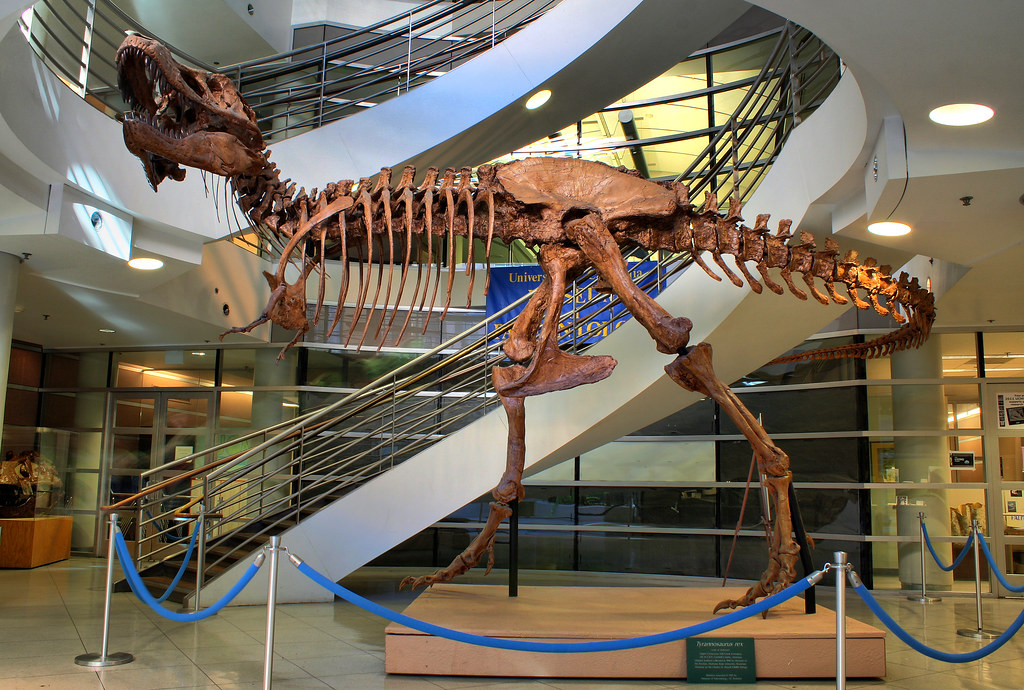
The Museum of the Rockies played a crucial role in the discovery and preservation of one of the most complete T. rex skeletons ever found—the Wankel T. rex, now known as the “Nation’s T. rex.” This remarkable specimen was discovered by amateur fossil hunter Kathy Wankel in 1988 near Fort Peck Reservoir in eastern Montana. After excavation by Museum of the Rockies paleontologists, the specimen became part of the museum’s collection before being loaned to the Smithsonian’s National Museum of Natural History in Washington, D.C., where it now serves as the centerpiece of their dinosaur hall. What makes the Wankel T. rex particularly significant is the preservation of its forelimbs—the first complete T. rex arm ever found—which provided valuable insights into the function of these seemingly diminutive appendages. The Museum of the Rockies maintains a full cast of this impressive specimen, allowing Montana visitors to appreciate this local prehistoric celebrity that now educates millions of people annually at the Smithsonian.
The Changing Landscape of Prehistoric Montana
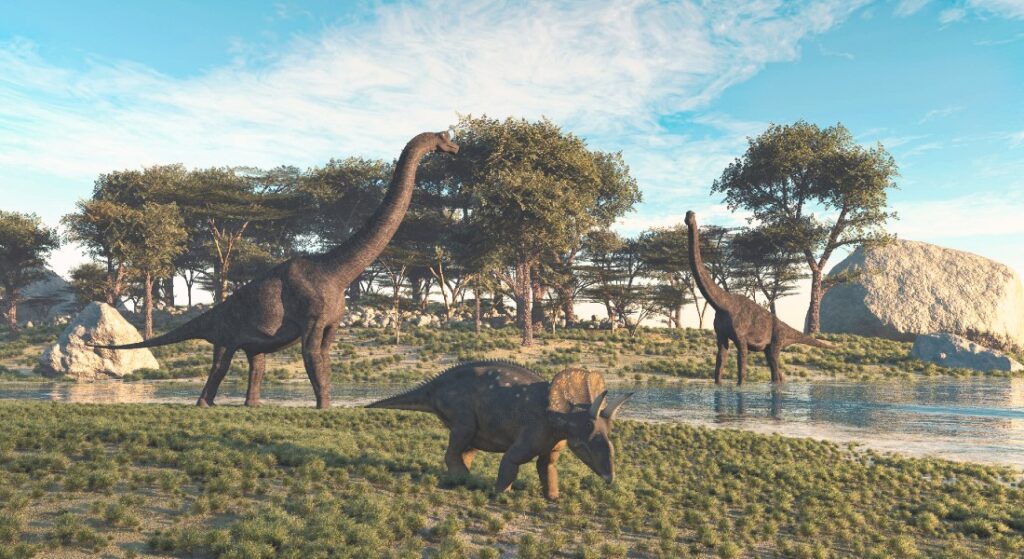
The Museum of the Rockies takes visitors beyond dinosaurs to explore Montana’s dramatically changing environments over millions of years. During the Cretaceous period when many of Montana’s dinosaurs lived, the state was unrecognizable compared to today—much of eastern Montana lay beneath a vast inland sea, while western regions featured lush coastal plains with subtropical climates. The museum’s exhibits use fossil plants, pollen samples, and geological evidence to reconstruct these ancient ecosystems in remarkable detail. Visitors can trace Montana’s transformation from a dinosaur-populated swampland to a mammal-dominated landscape following the extinction event 66 million years ago. The exhibits continue through the ice ages, when massive glaciers carved Montana’s mountains and valleys, creating the dramatic topography we see today. This deep-time perspective highlights the dynamic nature of Earth’s environments and contextualizes the diverse fossil record preserved in Montana’s rocks.
Beyond Dinosaurs: Montana’s Prehistoric Mammals
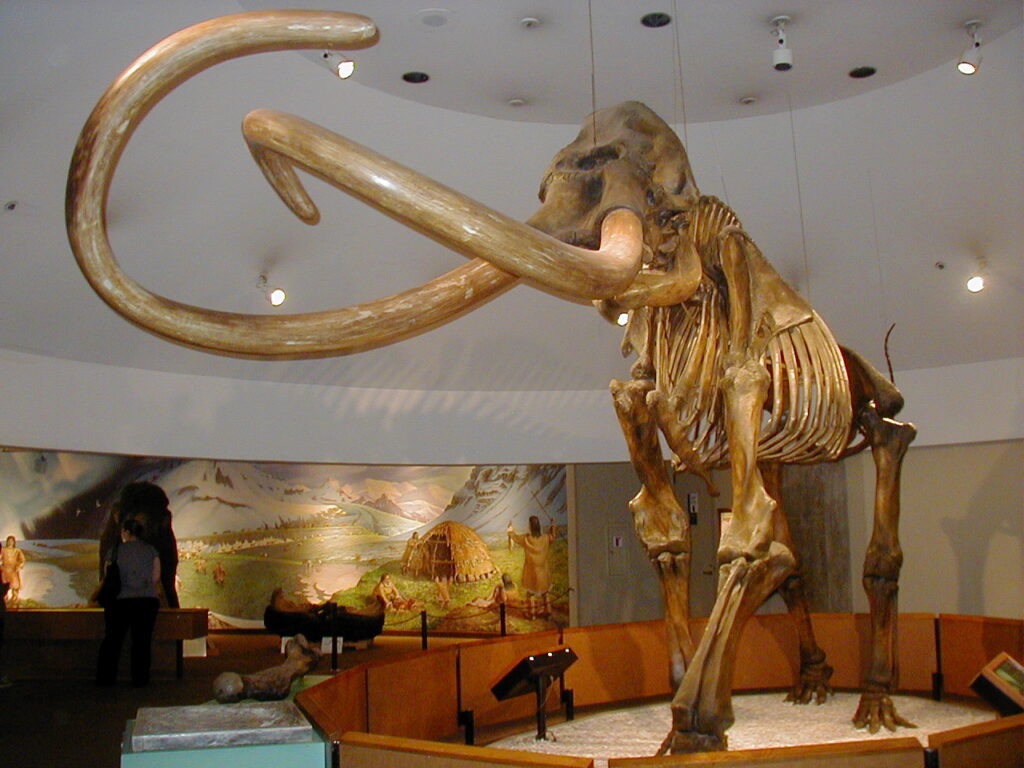
While dinosaurs may be the museum’s most famous residents, the Museum of the Rockies also showcases Montana’s rich mammalian fossil history that followed the dinosaur extinction. After the catastrophic asteroid impact 66 million years ago, mammals diversified to fill ecological niches previously dominated by dinosaurs. The museum’s exhibits feature remarkable specimens of ancient mammals that once roamed Montana, including massive Brontotheres (distant relatives of horses and rhinos), saber-toothed cats, and ancient camels adapted to the region’s evolving environments. Particularly impressive are the Ice Age exhibits featuring Columbian mammoths and American mastodons, whose remains have been found throughout Montana. These extinct elephant relatives lived alongside early humans who crossed into North America via the Bering land bridge. The museum’s displays of prehistoric bison, giant ground sloths, and dire wolves create a vivid picture of Montana’s prehistoric landscape just before human colonization dramatically transformed the region’s ecology.
The Science Behind the Exhibits: Active Research

What distinguishes the Museum of the Rockies from many natural history museums is its position as an active research institution affiliated with Montana State University. The museum houses state-of-the-art laboratories where paleontologists prepare and study newly discovered specimens, often in full view of visitors. This connection to ongoing research ensures that exhibits reflect the latest scientific findings rather than outdated information. The museum’s paleontology department conducts annual field expeditions to fossil sites across Montana, continually adding to the collection of over 300,000 specimens. Museum scientists use advanced technologies such as CT scanning, histology (studying bone microstructure), and isotope analysis to extract new information from fossils, often revising our understanding of ancient life. Visitors frequently have opportunities to watch fossil preparation in progress or speak with researchers about their current projects, creating a dynamic educational experience that bridges the gap between scientific discovery and public understanding.
Dinosaur Eggs and Embryos: Rare Glimpses of Beginnings
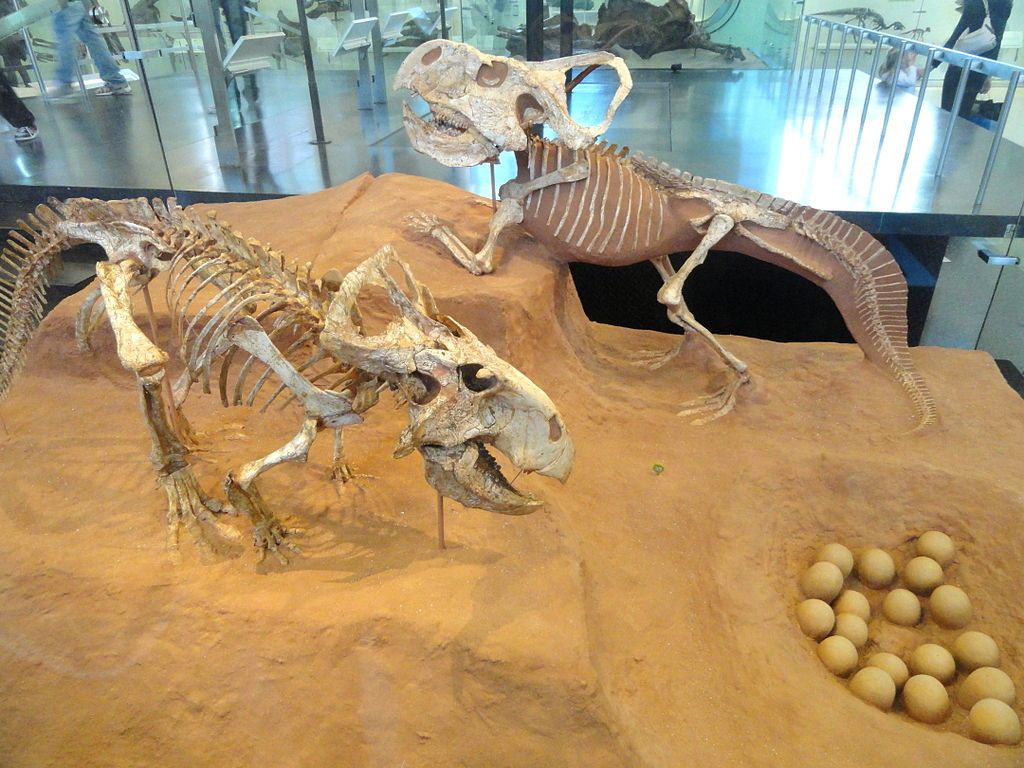
The Museum of the Rockies houses one of the world’s most significant collections of dinosaur eggs, nests, and embryos, providing rare insights into the beginning stages of dinosaur lives. Montana’s fossil beds have yielded extraordinarily well-preserved nesting sites that allow scientists to study dinosaur reproductive biology in unprecedented detail. The museum’s exhibits feature actual fossil eggs showing the delicate structure of eggshells under microscopes, revealing growth patterns and pore structures that indicate how dinosaur eggs functioned. Particularly remarkable are the embryonic remains that show dinosaurs in their earliest developmental stages, with some specimens preserving the position of baby dinosaurs curled inside their eggs just before hatching. These embryonic fossils have allowed scientists to track how certain dinosaur features developed and changed during growth, providing crucial evidence for the evolutionary relationship between dinosaurs and birds. The museum’s comparative displays of modern reptile and bird eggs alongside dinosaur specimens create a compelling narrative about the evolution of reproductive strategies across millions of years.
The Hell Creek Formation: Last Days of the Dinosaurs
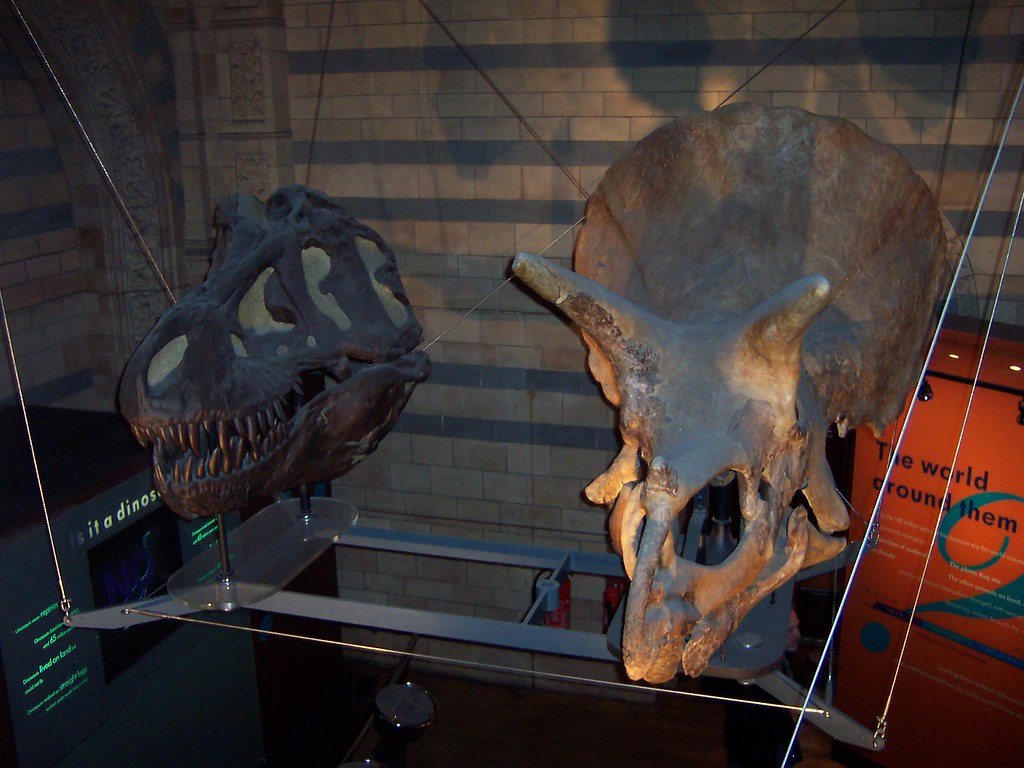
Montana’s Hell Creek Formation represents one of the most important geological formations for understanding the extinction of non-avian dinosaurs, and the Museum of the Rockies dedicates significant exhibition space to this crucial time period. This formation preserves the last few million years of the Cretaceous period, culminating in the catastrophic asteroid impact that triggered mass extinction 66 million years ago. The museum’s Hell Creek exhibits showcase the rich diversity of life that existed just before the extinction, including T. rex, Triceratops, and numerous other dinosaur species that disappeared forever. Particularly compelling are the displays showing the thin layer of iridium-rich clay marking the exact boundary between the Cretaceous and Paleogene periods—physical evidence of the asteroid impact. Visitors can examine fossils from immediately below and above this boundary, witnessing the dramatic transformation of Montana’s ecosystems as dinosaurs vanished and mammals began their evolutionary expansion. This scientific narrative of extinction and recovery provides powerful context for understanding today’s biodiversity crisis.
The Controversial Discoveries: Pushing Scientific Boundaries

The Museum of the Rockies doesn’t shy away from presenting controversial paleontological discoveries that have challenged scientific consensus. Perhaps most famous was the 2005 announcement by former curator Mary Schweitzer regarding soft tissue preservation in a 68-million-year-old T. rex specimen. This discovery initially met with skepticism from the scientific community, as conventional wisdom held that soft tissues could not survive for millions of years. The museum’s exhibits document how subsequent research confirmed these findings and revealed preservation mechanisms previously unknown to science. Another controversial area featured in the museum concerns Jack Horner’s hypothesis that Triceratops and Torosaurus might represent different growth stages of the same species rather than separate dinosaurs—a proposition that continues to generate scientific debate. By presenting these scientific controversies alongside the evidence, the museum demonstrates that paleontology is not a collection of static facts but an evolving field where new discoveries continually refine our understanding of prehistoric life.
Connecting Past and Present: Montana’s Paleontological Legacy
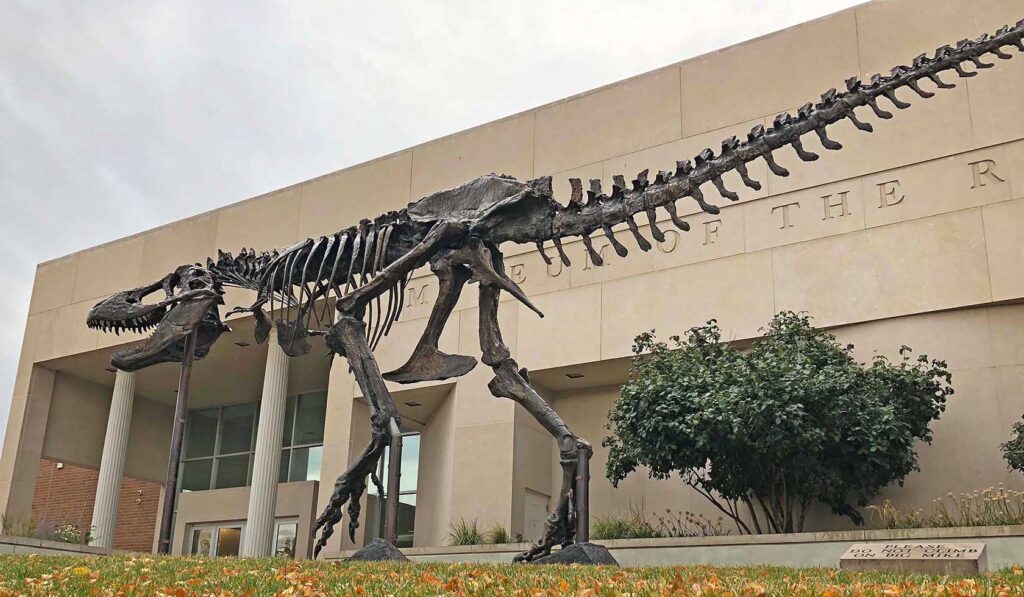
The Museum of the Rockies creates meaningful connections between Montana’s prehistoric past and its present landscapes and ecosystems. Interactive exhibits help visitors understand how ancient geological processes shaped Montana’s current topography, from the formation of the Rocky Mountains to the carving of river valleys. The museum explores how the state’s rich fossil resources have influenced Montana’s cultural and economic development, from the indigenous peoples who incorporated fossils into their cultural traditions to the modern tourism and research economies supported by paleontological discoveries. Particularly effective are the exhibits linking prehistoric species to their modern descendants—showing, for example, how ancient conifers preserved as fossils relate to the pine forests covering Montana’s mountains today, or how prehistoric fish evolved into modern Montana trout species. This deep-time perspective gives visitors a profound appreciation for Montana’s natural heritage and the ongoing processes of evolution and environmental change that continue to shape the state’s remarkable biodiversity.
Education and Outreach: Inspiring Future Paleontologists
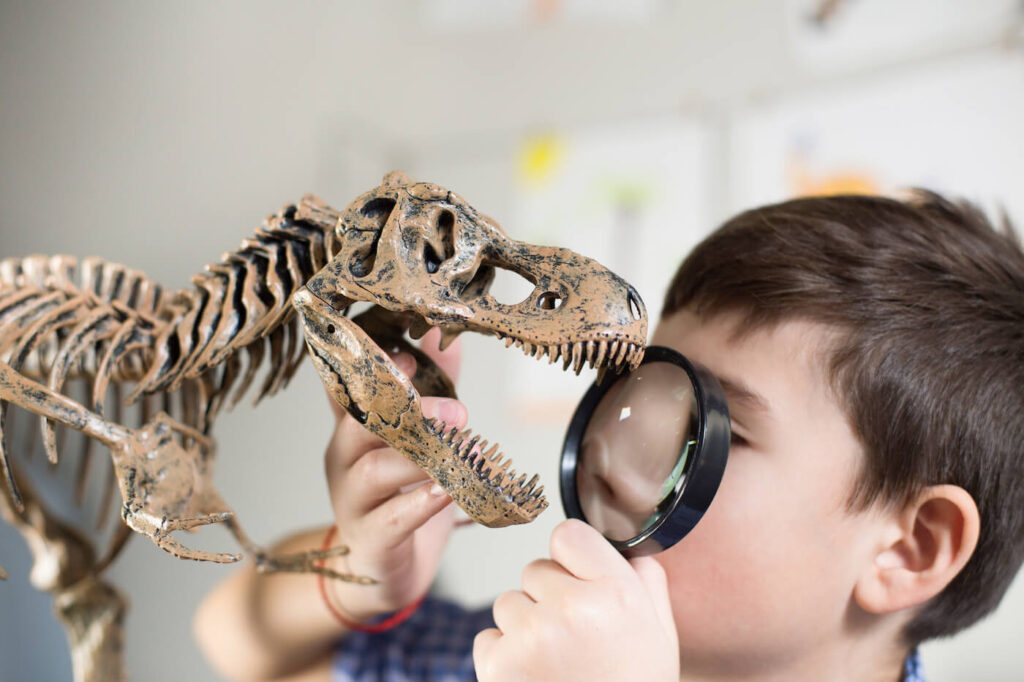
Beyond its research and exhibition functions, the Museum of the Rockies operates extensive educational programs that bring Montana’s prehistoric past to students across the state and beyond. The museum’s dedicated education department develops curriculum-aligned materials that help teachers incorporate paleontology into science education at all grade levels. Particularly innovative are the museum’s traveling trunks containing fossil casts, activities, and lesson plans that reach remote rural schools without access to museum visits. The museum also hosts intensive summer programs where students can participate in actual fossil digs under professional supervision, providing hands-on experience with paleontological methods. Many professional paleontologists working today trace their career inspiration to childhood visits to the Museum of the Rockies or participation in its educational programs. By making Montana’s fossil heritage accessible to young people regardless of geography or economic circumstances, the museum ensures that the next generation will continue the scientific exploration of our planet’s remarkable prehistoric past.
Preserving Montana’s Prehistoric Heritage for Future Generations
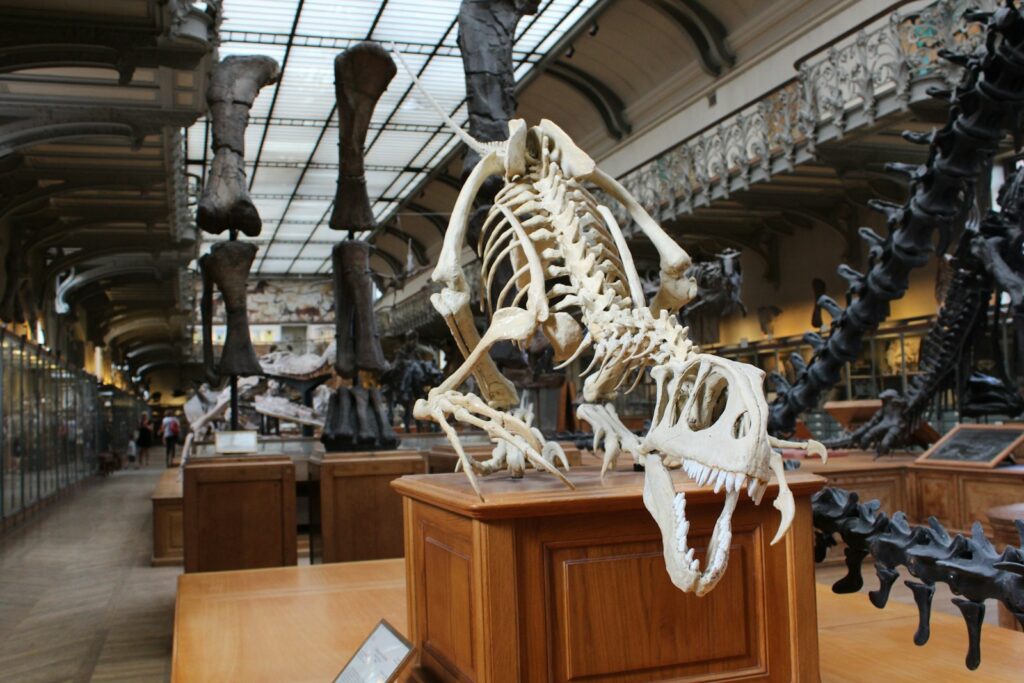
The Museum of the Rockies stands as both a scientific treasure house and a cultural institution central to Montana’s identity. Through its comprehensive exhibits, active research programs, and dedicated educational initiatives, the museum ensures that the state’s extraordinary paleontological heritage remains accessible to both scientists and the public. As new technologies emerge and fresh discoveries continue to be unearthed from Montana’s fossil-rich landscapes, the Museum of the Rockies evolves alongside our understanding of prehistoric life. What remains constant is the sense of wonder that visitors experience when standing beneath the towering skeletons of creatures that dominated Montana’s ecosystems millions of years before humans existed. In preserving and interpreting these ancient remains, the museum offers not just a glimpse into our planet’s past, but a deeper appreciation for the complex, ever-changing story of life on Earth—a story in which Montana has played a starring role for hundreds of millions of years.


